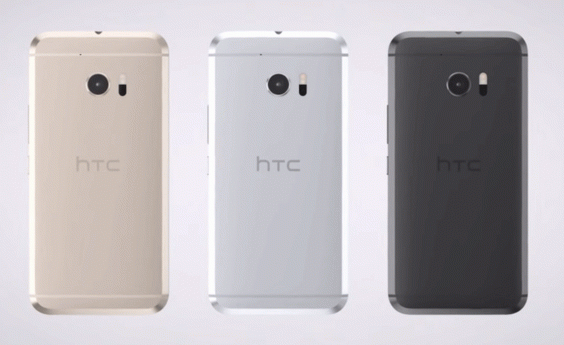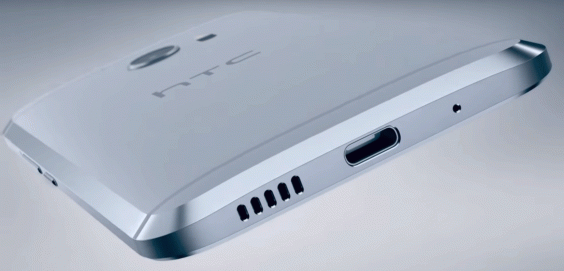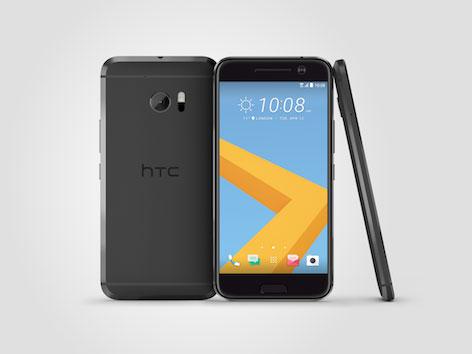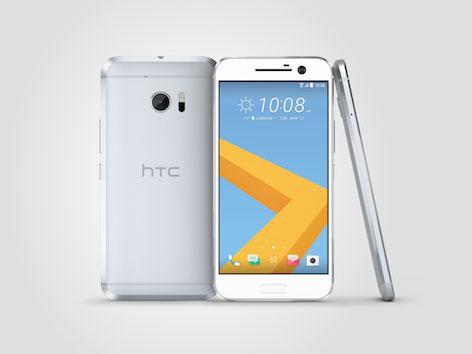he latest smartphone from HTC will go on sale later this month, the Taiwanese manufacturer revealed this afternoon in an online press conference.
The Independent saw the new phone last week in a behind-closed-doors briefing. Here are some first impressions…
Design
It looks good. The new phone, called the HTC 10, follows on from last year’s HTC One M9. But while it continues the same design language such as a curved back, this is a whole new beast. The finish is smooth and looks different according to how light falls on it. The edging is much better than last year’s model, so it’s much comfier to hold. And this time the curve at the edges is, well, curvier so the phone is just 3mm thick at the edges. Quite a bit thicker in the middle, obviously, where it’s 9mm.

HTC is going for a cleaner, purer look – it’s even taken the HTC logo off the front of the phone. The company has always taken the view that its products should be identifiable even if the label fell off, so it’s taking this principle to an extreme, here. The logo is there on the back, though. The phone will come in three colours: carbon grey, glacier silver and topaz gold. The silver and gold look particularly sharp.
Display
There’s a 5.2-inch screen with resolution of 564 pixels per inch. More than you can see, frankly, and enough to make it look pretty spectacular. HTC One M9 fans will notice that the BoomSound speakers the company puts at top and bottom of the display for really powerful audio without headphones are gone.

Except they’re not, actually. This is HTC BoomSound Hi-Fi edition which means that the tweeter sits facing forward near the top of the phone while the woofer is on the base of the phone, shooting the bass sound downwards. Bass, you may know, is non-directional, so a speaker placed on the bottom edge should be fine. When we review the phone properly, we’ll let you know.
There’s also a fingerprint sensor just beneath the screen and, on either side, capacitive buttons. Some Android phones put these buttons on the display itself – HTC says this arrangement means there’s more screen real estate.
Camera
This is such an important feature on a smartphone now and some felt the HTC One M9 didn’t deliver. The HTC 10 boasts the company’s UltraPixels – it just means big pixels designed to pull in more light. The rear camera is a 12-megapixel sensor, laser autofocus, optical image stabilisation and a two-tone LED flash. All sounds good, especially since those UltraPixels are pretty large, 1.55 microns. But some ground-breaking features were announced, too. The sound when you’re shooting video, at up to 4K resolution, is Hi-Res Audio, for instance. And there’s still HTC’s Zoe Capture which combines stills and moving pictures. If it sounds like Apple’s Live Photos, it is, but HTC got there first.

he front-facing camera also has UltraPixels, though these are smaller (1.34 microns) and fewer (five megapixels). But HTC says this is the first front-facing camera with optical image stabilisation, handy for those selfies when you’re feeling a little unsteady. In the past, UltraPixels have proved very effective ways of shooting better in low light. Having 12 megapixels of these big pixels will take a lot of processing power, but the HTC 10 seems to have this.
Power
On board is a quad-core processor, the Qualcomm Snapdragon 820 with a huge amount of RAM: 4GB. There are other phones with this much RAM available but they are pretty rare. In brief hands-on tests, this made the phone very snappy and responsive, though final verdicts will have to wait for a full review.
The storage on board is 32GB, with 64GB also available. Both have a microSD storage card slot so you can expand the memory massively with an extra card.
Software
As you know, phone manufacturers can add their own designs and flourishes to Android software. HTC has, from its earliest Android days, had the most stylish and elegant take on the system. This time around, though, the vanilla Android experience is more to the fore. HTC says it’s worked closely with Google to achieve this. I miss the more individual design HTC has always shown, but it does mean it’s easier to swap from, say, a Sony or Samsung to this handset.

And there are certain advantages. One of the big criticisms of Android is the level of bloatware, where manufacturers add extra apps that users may not want. In HTC’s case it meant having several apps that did the same thing, Google’s and HTC’s own. Now the company has worked to streamline things, picking either its own app or Google’s one and integrating the two. So the HTC Gallery app is gone, and images are found in the Google Photos app instead. But HTC’s Mail app is still there.
And now the home screen layout is more flexible than before. Unlike Apple’s iPhone where a rigorous grid of identically-shaped app icons flow from top left to bottom right on each screen, with Android you can leave screens half empty, say. But there was still a subtle grid to be adhered to. Not any more. Icons can be plonked wherever you want and there are themes (cartoon space characters, cats) that look fantastic. These can be folders or individual apps and can have labels or not, so it’s easier to hide things if you want to. These are small extras but fun to have.
HTC says there’s a big, powerful, long-lasting battery on board which should last well past a day and recharges to 50 per cent in 30 minutes. It even comes with a QuickCharge 3 charger in the box and has an HTC speciality, CoolCharge which stops the phone from getting hot as it charges.
These and other features need proper testing before a decent judgement can be made. Watch this space. Meantime, this is certainly the classiest-looking phone HTC has made, and if the promised features live up to the hype, it will be a deeply impressive handset.


































